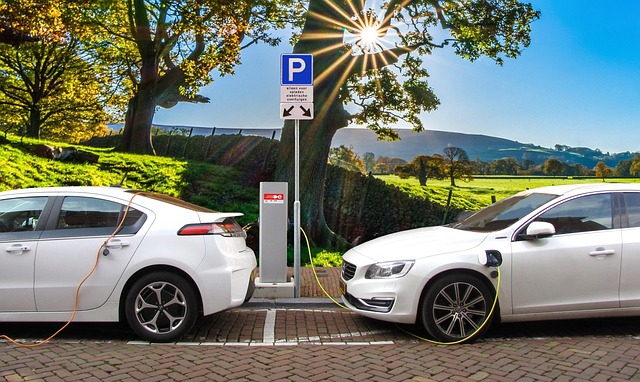Looking to register your car in California? This comprehensive guide breaks down the process step-by-step, from understanding key requirements to submitting your application. First, grasp the essential car registration rules in California. Next, gather vital documents and learn how to verify your Vehicle Identification Number (VIN) accurately. Choose an appropriate license plate design and prepare to pay the necessary fees. By following these steps, including the use of a reliable VIN verifier, you’ll navigate the process smoothly.
- Understand California Car Registration Requirements
- Gather Necessary Documents for Registration
- How to Verify Vehicle Identification Number (VIN)
- Choose an Appropriate California Car License Plate
- Submit Application and Pay Fees for Car Registration
Understand California Car Registration Requirements

Before diving into the registration process, it’s crucial to understand California’s car registration requirements. These regulations are designed to ensure vehicle safety and accountability on state roads. Every car owner in California must obtain a valid registration certificate from the Department of Motor Vehicles (DMV). This involves verifying the vehicle’s identification number (VIN) which acts as a unique fingerprint for each car, ensuring it meets all necessary safety standards.
A key component of this process is the VIN verifier, a tool that plays a vital role in cross-referencing the provided VIN with the manufacturer’s records to confirm its authenticity and history. Additionally, vehicles over certain age thresholds or those involved in specific high-risk activities might require further inspections, such as a mobile VIN inspection, for registration approval.
Gather Necessary Documents for Registration

Before you start the registration process, make sure to gather all the essential documents required by the California Department of Motor Vehicles (DMV). One crucial piece of documentation is the Vehicle Identification Number (VIN) verification. This can be done through a mobile VIN verifier or by obtaining an official VIN inspection report. The VIN is a unique code that identifies your vehicle and is typically located on the vehicle’s frame or near the dashboard.
Having these documents ready ensures a smoother registration process. It’s important to note that the DMV may request additional information, especially if there are any discrepancies during the verification step. A mobile VIN inspection or verifier can help you quickly and accurately obtain the necessary data for your car’s registration in California.
How to Verify Vehicle Identification Number (VIN)

Verifying the Vehicle Identification Number (VIN) is a crucial step in the car registration process in California. This unique 17-character code is like a fingerprint for your vehicle, and it’s essential to ensure its accuracy. One efficient way to do this is by using a mobile vin inspection service or a vin verifier app. These tools allow you to quickly cross-reference the VIN with official databases, confirming its validity and ensuring there are no discrepancies or hidden issues associated with it.
A simple process involves taking a clear photo of the VIN plate located on your car’s dashboard or engine bay. Then, using one of these mobile vin inspection services, you can input the image to instantly receive detailed information about your vehicle, including its make, model, year, and even history reports. This additional layer of verification is highly recommended before proceeding with registration to avoid any potential issues or delays in the process.
Choose an Appropriate California Car License Plate

When registering your car in California, selecting the right license plate is an essential step. California offers a variety of options for vehicle owners to choose from, but one critical consideration is using a reliable vin verifier to ensure the authenticity and history of your car. A Vehicle Identification Number (VIN) inspection through a mobile vin verifier or a standard inspection station can help you avoid potential issues later on.
Opting for a license plate that matches your vehicle’s make, model, and year enhances both aesthetics and practicality. California’s Department of Motor Vehicles (DMV) provides guidelines for license plate designs, ensuring consistency and clarity on the road. Additionally, using a mobile vin inspection service can make this process more convenient, as these services offer on-site VIN verification, saving you time and effort during registration.
Submit Application and Pay Fees for Car Registration

After gathering all the necessary documents and ensuring your car meets California’s requirements, it’s time to submit your application for vehicle registration. You can do this online through the California Department of Motor Vehicles (DMV) website or by visiting a local DMV office. Both options require you to fill out an Application for Title and Registration (Form DV-140), providing detailed information about your car, including its make, model, year, and VIN number.
Once your application is complete, you’ll need to pay the required fees for registration. These can vary depending on factors like the type of vehicle, its age, and whether you’re renewing or transferring ownership. You have the option to pay by check, debit card, or credit card. If choosing a mobile vin inspection or vin verification service, ensure it’s DMV-approved to avoid any potential issues with your application.
Registering a car in California involves understanding key requirements, gathering essential documents, verifying the Vehicle Identification Number (VIN) using a reliable VIN verifier, selecting appropriate license plates, and submitting an application along with necessary fees. By following these steps and ensuring all paperwork is accurate, you can successfully complete the registration process for your new vehicle in the Golden State.
